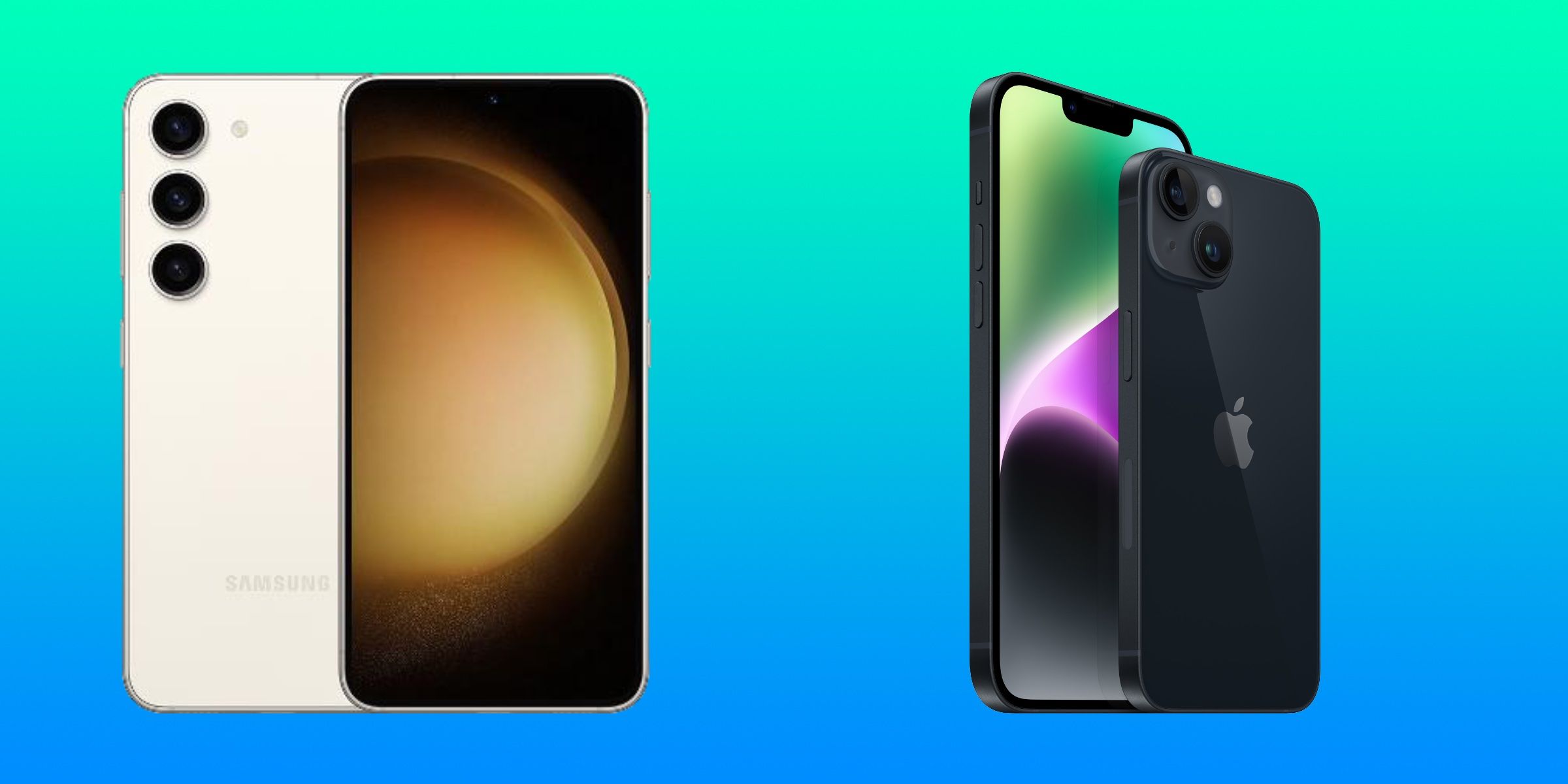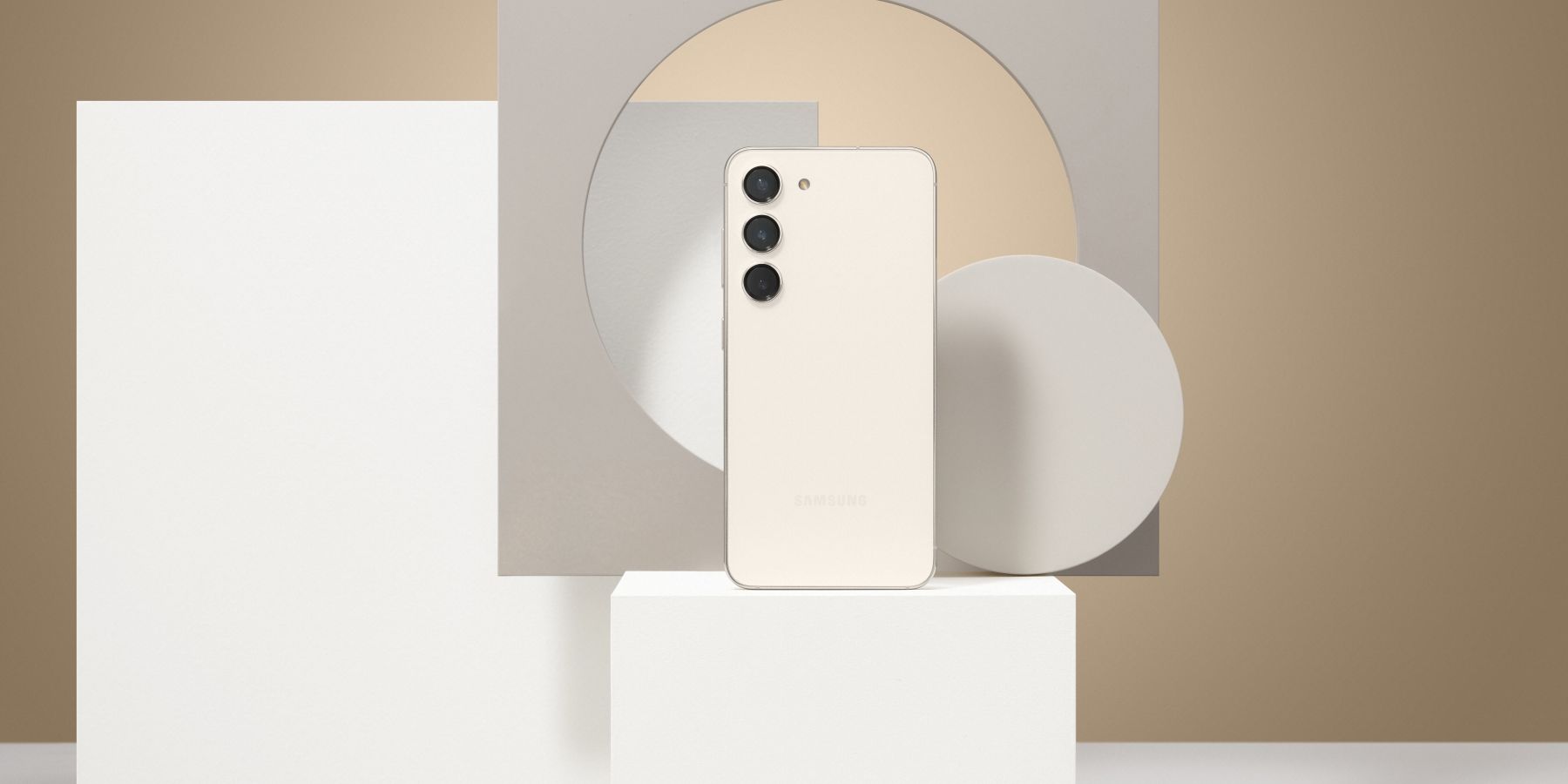Samsung showcased the just-announced Galaxy S23 at its Unpacked event, which means the iPhone 14 has new competition for the title of the best base-model smartphone. Though both Apple and Samsung offer higher-end smartphones with better specs than the iPhone 14 and Galaxy S23, not every consumer wants to spend money on a thousand-dollar device. That's why base-model smartphones, which feature plenty of flagship hardware, are still alive and well even in 2023. The iPhone 14 was released in September 2022, but it was largely unchanged compared to the prior iPhone 13. Now, Samsung's latest Galaxy S23 provides a new alternative to the iPhone 14.
The iPhone 14 and the Galaxy S23 have the same starting price of $799 and the same screen size of 6.1 inches, but that's just about where the devices' similarities end. The Galaxy S23 has an AMOLED display capable of an adaptive refresh rate of up to 120Hz. The iPhone 14 has an OLED display, but doesn't offer high refresh rate technology — that feature is limited to the iPhone 14 Pro and Pro Max. Samsung's display is brighter, with an outdoor peak brightness rating of 1,750 nits that dwarfs the iPhone 14's 1,200 nit rating. Apple and Samsung are closer in pixels per inch (ppi): 460 ppi to 425 ppi, respectively.
iPhone 14 vs. Galaxy S23: Camera, Battery, & Performance
Apple designed the iPhone 14 with a dual-sensor camera system that includes a main and ultrawide lens, while Samsung's Galaxy S23 is a triple-sensor camera system. The Galaxy S23 has a 50MP primary camera, a 12MP ultra-wide sensor, and a 10MP telephoto lens. That allows the Galaxy S23 to offer 3x optical zoom and 30x Space Zoom, besting the iPhone 14's 2x optical and 5x digital zoom.
Samsung's Galaxy S23 has a physically-larger battery than the iPhone 14, but some will argue that Apple's hardware and software integration creates a better battery life in day-to-day use. Regardless, the Galaxy S23's 3,900 mAh battery has a higher capacity than the iPhone 14's 3,279 mAh battery. The former comes with a slightly faster 25W charging speed as well.
Like Samsung's entire S23 lineup, the base-model Galaxy S23 is powered by the Snapdragon 8 Gen 2 platform. The Snapdragon chip is paired with 8GB of RAM. Not only is the modified version of the system-on-a-chip on the Samsung device faster, but it is actually newer than the iPhone's SoC. Surprisingly, Apple made the decision to ship the iPhone 14 with an A15 chip — the same silicon found in last year's iPhone 13.
Both smartphones are extremely capable devices in 2023, but the Galaxy S23 has the edge in specs — at least on paper. Users should choose the smartphone they'd enjoy most on a daily basis, and intangible factors like software and ecosystem play a huge role in that decision. The Galaxy S23 is available for pre-order now and will go on general sale on Feb. 17.


